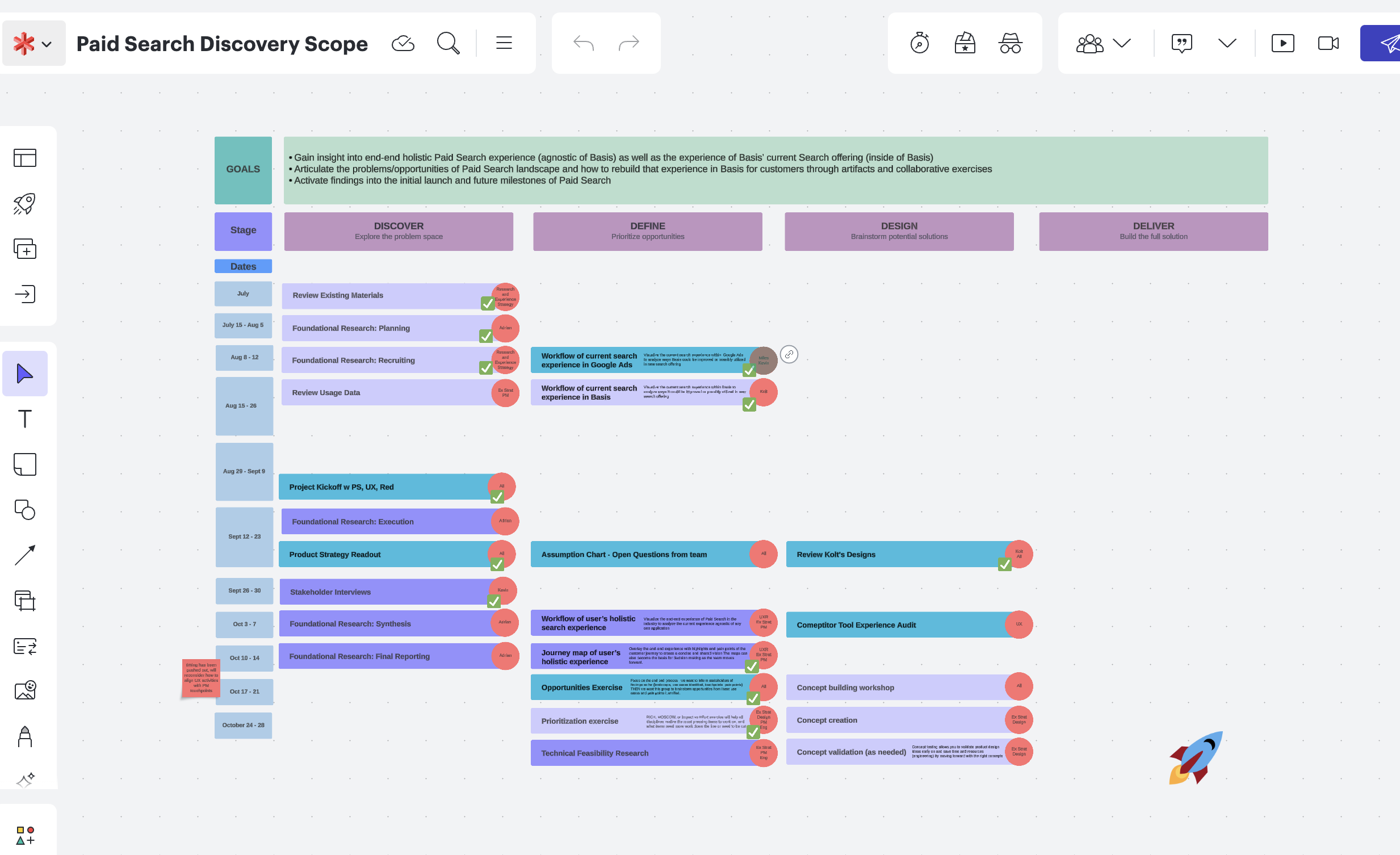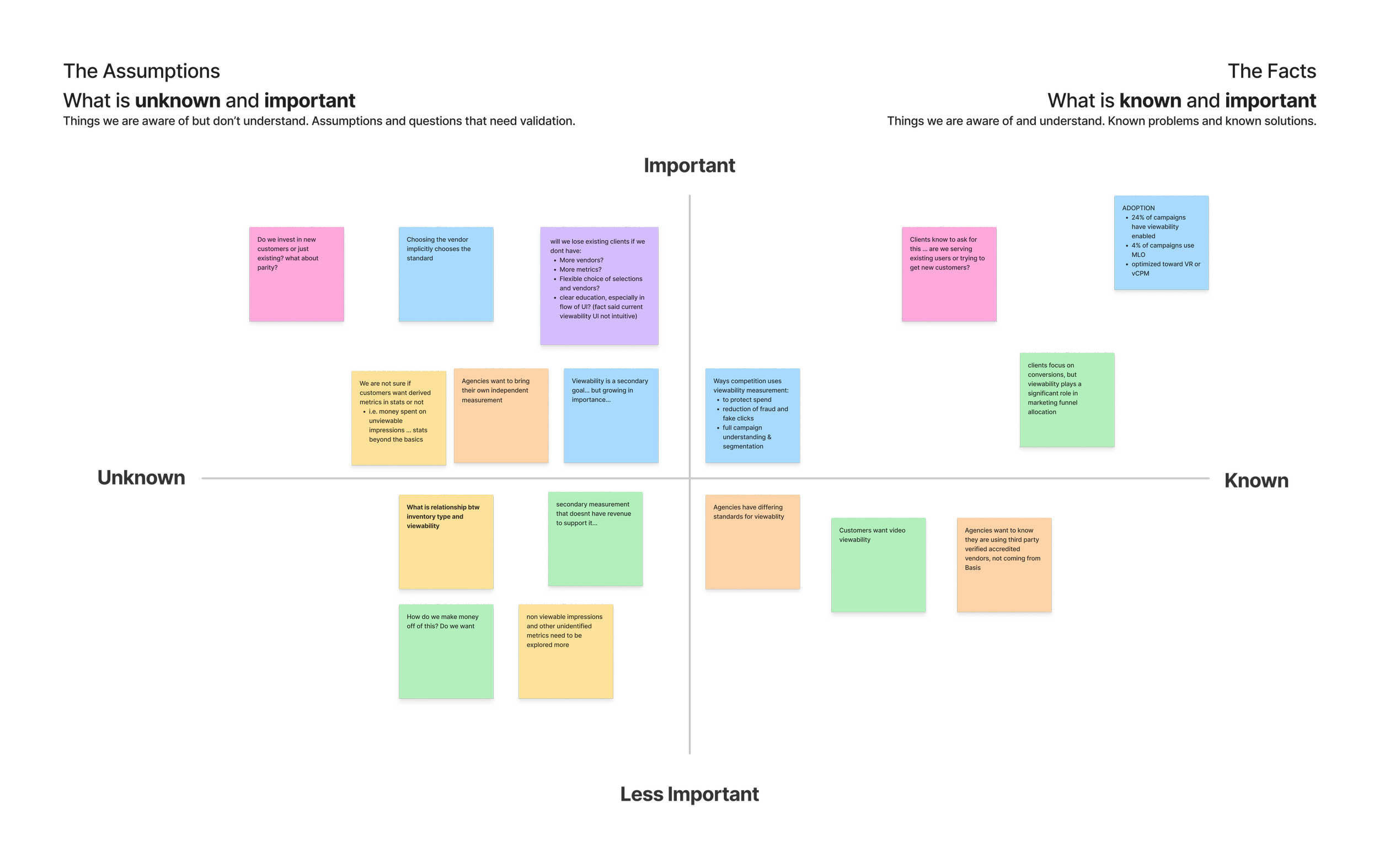STRATEGIC
PLANNING
Challenge
It became a trend of designers feeling they were struggling to contribute effectively on their feature teams with design outputs that were both impactful and completed in a timely manner - usually compromises had to be made to the design or designers needed more time. This was felt even moreso by UX researchers. It was an ongoing struggle to accurately scope and slot UX efforts into overall feature team sprints, let alone be a consistent practice across teams. UX felt they didn’t have the influence and time they needed - and optics could start showing UX practice as a possible bottleneck. On top of that, the overall experience and design of our platform suffered as well.
Process
I set out to build frameworks that would aid in rapport building and boundary setting … and ultimately UX design influence on overall product and tech org. Research and design needed to be considered in timelines and play a larger role in product definition, possibly ahead of feature team structure. Artifacts, exercises, and touchpoints needed to be introduced throughout the product development lifecycle without just adding more time to timelines. We needed buy-in from tech counterparts. What’s in it for them?
Project Scoping & Discovery
UX is immediately seen as a bottleneck if there’s not proper level-setting and time scoping of touchpoints and deliverables. The first step, when feasible, was introducing not only design sprints, but discovery sprints that included research activities. Instead of seeing these sprints as adding to the timeline, I needed to change the mindset to bringing UX in earlier to the timeline.
To assess the need for discovery sprints or the scope, I used frameworks to start conversations of design input vs project size and complexity. The larger and more complex, then more UX input is most likely needed. What is the overall confidence level … and how does a team objectively define confidence level? What quantifiable measurement do we have to support the hypothesis? Do we plan on testing with users?
I had conversations with product, engineering, and project management leaders to get top-down buy-in for new processes, then worked closely with project management to introduce these research and design facets into overall project timelines and touchpoints.
Advocacy, Training, Mentoring
Along with establishing these UX roles and scopes, the next layer is delivering on the terms. Throughout a year timeframe I trained to facilitate working sessions and then teach UX practitioners how to facilitate as well. UX practitioners needed to be trained to conduct sessions and different functions - product, engineering, QA, data, etc. - needed to be trained to participate in sessions. As active participants, the audience UX is running workshops on must be educated, prepped, and made comfortable enough to contribute in a meaningful manner.
In order to scale and support these processes, UX Toolkit was born, accessible to the entire tech team.
Assumption Map
What are the assumptions? What are the facts? Get a working group to decide on the confidence and importance, it will help build a consensus on next steps.
Facilitating this activity became a UX Toolkit item and mentorship opportunity for training research and design teams.






